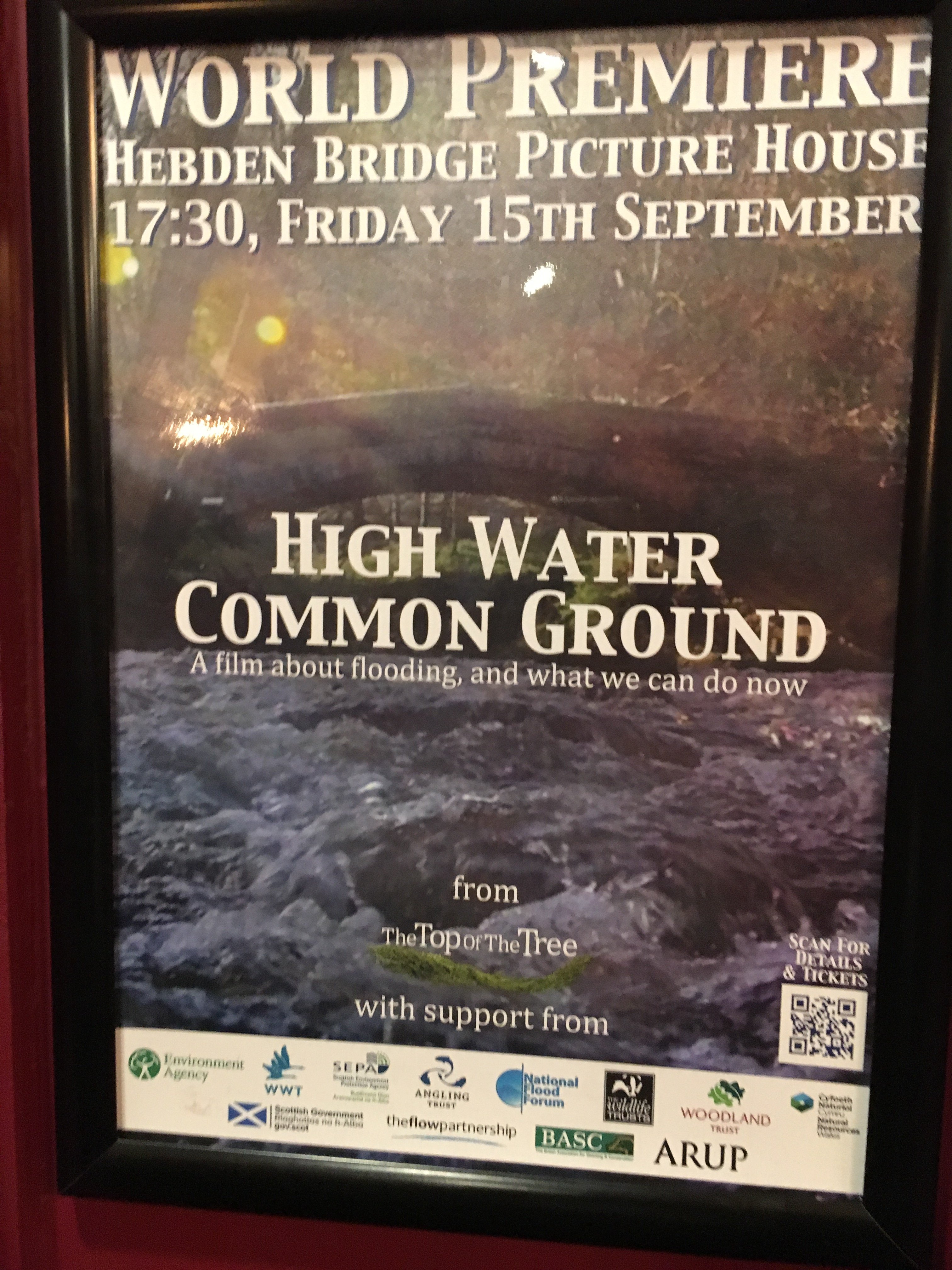
I was lucky enough to attend the world premier of this film on Friday. There were about 100 of us in the Picturehouse at Hebden Bridge.
Some of the readers of this blog will remember that Hebden Bridge lies below the infamous Walshaw Moor – and that Hebden Bridge flooded badly in 2012 and on Boxing Day 2015. Hebden Bridge forms part of the story of why we should ban driven grouse shooting.
The film looks at a whole range of community actions that are in the category of natural flood management and interviews scientists, land managers and mobilised citizens about what they have achieved.
Here’s a short trailer…
The uplands are important, trees are important and you’d think that in a more natural world beavers would be important too. The rather unspoken argument for rewilding was made strongly.
But even if you don’t take that message from these examples, you will see that flood management thinking is changing and that more ecological methods are gaining ground, soggy ground. See here for more about the examples in the film.
Congratulations to Andy Clark who made the film. It’s something of which he can be proud. And it sounds like he has plenty more ideas for future films. I’ll look forward to seeing them.
[registration_form]
Trailer looks interesting and of the full length version may I inquire if there was any mention of the contribution made by the practice of heather burning as a management practice? Whilst I notice BASC in the credits there’s no mention of the Moorland Association, CLA & others?
No better place than Hebden bridge to premier this film I would have thought. And only a 100 turn up????
The same disinterest was evident when we turned up for a walk up to Walshaw moor, all the way from Lincolnshire. On a wet Saturday morning, only a dozen or so turned up for the initial meet in the square at Hebden, when it came to the walk itself, there were seven of us.
Is it I wonder, that the people of Hebden don’t believe that flood prevention can be achieved by the methods touted, or is it simply that in their busy, tourist filled lives, they are happy to leave it someone else?
Perhaps someone with a little influence (nudge) could get the film shown at the next Birdfair.
To be fair, it was the official launch, with mostly invited guests who’d been involved with the making or funding of the film. It wasn’t widely publicised, although there was a last minute bit in the Hebden Bridge Times. There was a good turnout from the EA, including John Curtin, Executive Director of Flood & Coastal Risk Management nationally and plenty of other top brass, so the film will hopefully be getting the message across where it matters. Some interesting tweets on https://twitter.com/johncurtinEA?ref_src=twsrc%5Egoogle%7Ctwcamp%5Eserp%7Ctwgr%5Eauthor
Thanks Mike. I stand corrected. That wasn’t made clear.
Hopefully the public will get a chance to see it sometime.
I was there too. Fabulous film and a credit to Andy and his team. Well worth seeing if you get the chance. I don’t think it will be generally available for a while as it’s doing the rounds of ‘workshops’ etc with EA and other sponsors. The issue of heather moorland management practices is covered – and the consequences when it’s done badly, as per Walshaw Moor – but not in great depth as there was so much about NFM to cover, while trying to keep the film to a manageable length. Hence why there are several short films on specific topics taken from the mass of stuff that Andy thought was too good to leave on the cutting room floor.
There tends to be an assumption that we’re starting this from a neutral position – the agricultural drainage campaign was so long ago most people don’t even know it happened – and the belief that farmland should be protected is so deeply embedded that it is rarely if ever questioned. However, between 1950 & the 1970s the UK spent hundreds of millions of pounds speeding water off the land – and in the process converted much of the floodplain from (floodable) grassland to arable. Well before the 1900s, riverine woodland had seen the largest loss of any ancient woodland type – well over 90% across Europe. The cost of destroying the natural checks on flooding and the damage to water quality from agricultural pollution is spectacular – probably over 1/2 the total current agricultural subsidy bill. Using nature to slow the flood isn’t the whole answer – there will still be a need for some hard defences, but is a prime example of how if we can think more cleverly and cross the insurmountable boundaries between engineers, farmers and ecological land managers we can solve problems and save money simultaneously.